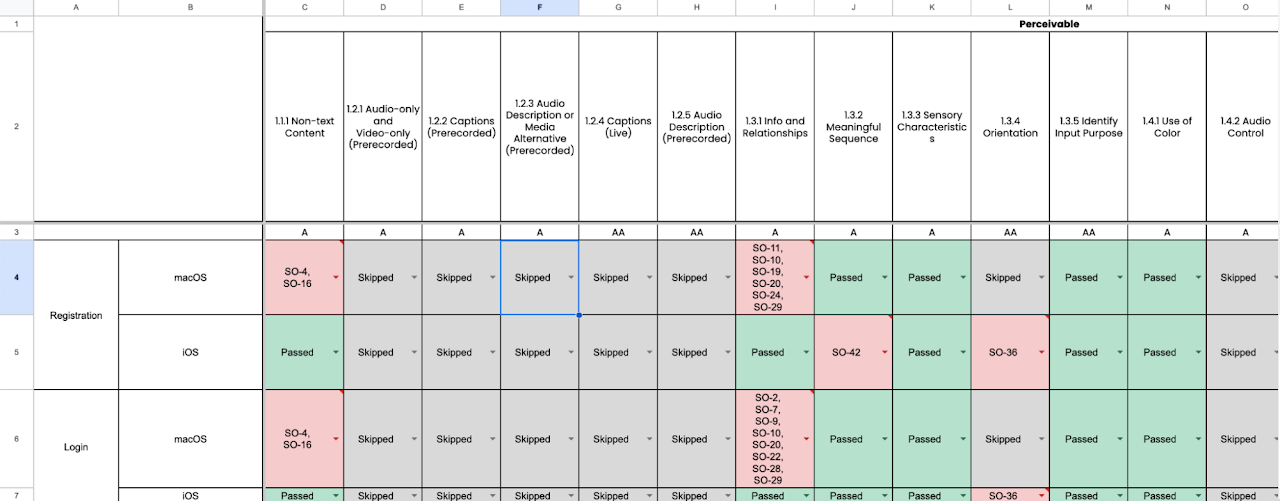Matrix Creation
An accessibility testing matrix is a tool used to track the accessibility testing progress of a website or an application. It is a table with many rows and columns, depending on the screen count. Here’s a document with an example matrix:

In the first row there is information about principle (Perceivable, Operable, Understandable, Robust), afterwards comes recommendations (From 1.1.1 all the way until 4.1.3) and then conformance levels (AAA level is not present).
The first two columns are used to identify the names of the screens that need to be tested and also the operating system that will be tested.
There are three color-coded options that can be chosen from the matrix table, which are:
- Passed
- Failed
- Skipped
The reason that the “Skipped” option is necessary is that some of the listed recommendations cannot be tested for particular screens (depending on the screen and also the operating system), in that case they are marked as “Skipped”.
When a defect is found and reported in the accessibility defects document, then the ID of the defect report is marked in the matrix for the screen that the defect was reported under, based on the Tags used in the defect report. The corresponding table cell automatically changes to red color (“Failed” status), indicating that there is an issue for a particular screen regarding a particular recommendation.
Accessibility testing matrix is useful for the following reasons:
- It helps to ensure that all required screens are tested for all relevant WCAG recommendations.
- It provides a central place to track progress.
- It can be used to identify areas where the website or an application needs improvement.
- It can be used to generate a report of findings.